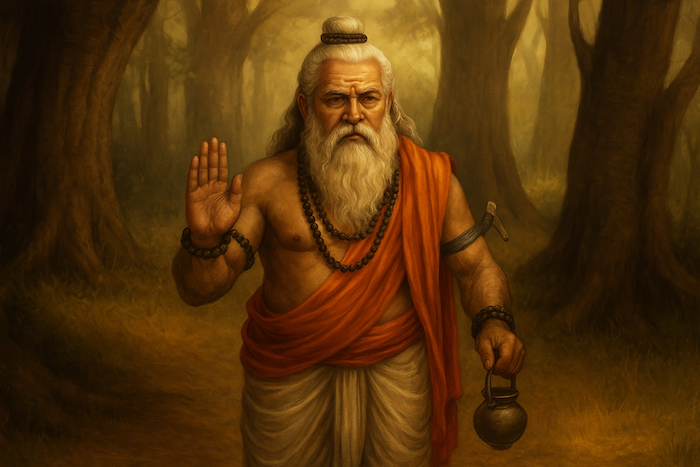
Ancient Wisdom Series
Agastya
Medicine & Linguistics
- Known for his incredible yogic power, scientific knowledge, and spiritual stature
- Pioneer of Vedic knowledge in South India — considered the founding sage of Tamil culture
- Renowned for balancing the Earth's tilt by traveling South (symbolic of cosmic balance)
- Revered in both Vedic and Tamil traditions, making him one of the most pan-Indian Rishis
- Linked to fields as diverse as medicine, grammar, alchemy, mantra shastra, and mystical sciences
Family Lineage / Gotra
origin
Born from a pot (kumbha)
Hence called 'Kumbhayoni'
alternateOrigin
Mitra and Varuna
In some traditions, conceived mystically by these deities
wife
Lopamudra
A learned woman and philosopher-saint in her own right (said to be created by Agastya himself for marriage)
Agastya is a symbol of self-created power, the guru of the South, and husband of wisdom itself
Key Texts
Agastya Samhita
A text covering medicine, surgery, alchemy, and electromagnetism. One section even discusses electrical batteries — interpreted by some as ancient science
Rigveda hymns
Attributed to Agastya and Lopamudra (including dialogues between them)
Tamil Grammar (Agattiyam)
Considered the first Tamil grammar, though only fragments remain
Siddha Tradition
Revered in Siddha tradition of Tamil Nadu for alchemy, herbs, and mystical knowledge
Interesting Stories
Balancing the Earth
During a massive gathering of sages in the North (Himalayas), the Earth tilted due to their spiritual weight
Agastya was requested by the gods to travel South and balance the planet
He accepted, and in doing so, brought Vedic wisdom to the South, becoming its foremost spiritual guide
Drinking the Ocean
During the war between Devas and Asuras, the Asuras hid under the sea
Agastya drank the ocean dry with his yogic power, exposing them
Symbolic of absorbing chaos to restore cosmic order
Mount Vindhya Bows to Agastya
The Vindhya mountains were growing too tall, challenging the Sun's path
Agastya, on his way South, asked the mountains to bow and stay bowed until he returned — which he never did
A symbol of ego surrendered before true humility and purpose
Dialogue with Lopamudra
Their dialogue in the Rigveda discusses desire, detachment, household duty, and spiritual partnership
A rare early exploration of marital and inner balance
Contributions and Discoveries
Founder of the Siddha medical system, precursor to Ayurveda in the South
Created medicines, metallic processes, and mantras still used in temple rituals
Introduced Vedic knowledge and Sanskrit grammar to Tamil-speaking regions
Contributed to Rigveda, Siddha literature, and Agastya Samhita
Spiritual Symbolism
Represents balance, integration, and expansion of consciousness
A yogi who conquers anger, ego, and even nature, yet remains a householder and teacher
His journey South symbolizes the spreading of light into new frontiers
Why is he 8th on the list?
Post the Sapta Rishis and foundational sages, Agastya comes in as the first great expander, bringing Vedic culture to the rest of India
His placement signifies the union of action and mysticism, North and South, science and spirituality
He builds a cultural bridge that few others match, making him essential in any pan-Indian Rishi list
Lineage & Timeline
Satya Yuga
~2.16 million years
The first and most virtuous age where dharma stood on all four legs. Many Rishis including Vashishtha and Vishwamitra lived during this time.